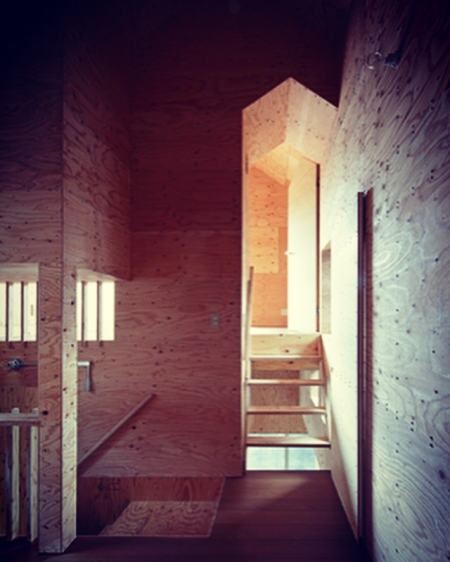それでよくない理由
何かをつくっている時が一番楽しいとしたら、その時は頭の中で何を考えているかな、何かがないとつくれないから、いつも何かないかな、何か手がかりがないかな、と考えているようだ。
その手がかり探しも楽しいのだが、ふと、手がかりは必要なのかと。
よくよく考えてみれば、手がかりなどなくても、つくれるなと、それが良いものか悪いものかは別にして、つくれてしまう。
そもそも建築なんて単純なんだと、日本的に考えれば、柱を建てて、屋根を架けて、壁で覆えば良い。ただそれだけで建築になる。神社やお寺は正にそれだけのことでできている、初源的な建築、立派に建築になる。
では、それで良いかと言えば、よくない。
そのよくない理由を、せっせと、あれこれと考えていたのが、どうも、初源的な建築の前では太刀打ちできない。
困ったものだ、だって「そんなことしなくても別にいいんじゃないの」なんてことを言われたら、その一言で吹き飛びかねない。
実際には、クライアントがいて、そのクライアントの要望を聞いた上でプレゼンをし、きちんと言葉で何故こうなるのかを説明をするし、それは当然要望に沿ったものだから、「そんなことしなくても別にいいんじゃないの」なんて一言で終わることはないけれど、ただ、それはプレゼンのテクニックに依存していることであり、今ここで考えていたことは、そもそも建築をつくる時にどうするか、というプレゼン以前、要望以前のことで、もちろん、それは技術的なことではなくて、要するに設計論になる。
例えば、モデリングと称して、いろいろな建築家の設計論を持ってきたとしても、初源的な建築の前ではどうでも良いことになる。それが、歴史的や学術的な側面が強くなれば、その設計論に一定の説得力が出てくるのだが、その歴史的や学術的な側面すら別になくても良い場面など、むしろそちらの方が多い。
ならば、今考えているのは、もっと偏屈になって、その偏屈さの強度で、初源的な建築に対抗しようかと、人が何かをつくる時、拠り所にするのは、結局はそこ、すなわち、初源的な建築との違いを強調することしかできない。
"The reason why it is not good"
If you are having fun making something, what do you think in your mind at that time, you can't make something without something, so there's always something or a clue? It seems to be.
Searching for clues is fun, but suddenly, I need clues.
If you think carefully, if you can't make it without clues, you can make it, whether it's good or bad.
In the first place, if you think in Japan that architecture is simple, you can build a pillar, build a roof, and cover it with walls. It just becomes architecture. Shinto shrines and temples are truly original architectures that are made of that much.
So, that 's not good.
I've always thought about the bad reason, but I can't beat it in front of the original architecture.
It's a problem, because if you were told that you didn't have to do that, you could blow it away.
Actually, there is a client, and after making a presentation after listening to the client's request, explain exactly why this happens in words. It doesn't end in a word, but it just depends on the technique of the presentation, and what I was thinking about now is what to do when building architecture in the first place. Before the request, of course, it is, of course, not a technical thing, but a design theory.
For example, even if you bring the design theory of various architects called modeling, it doesn't matter before the original architecture. If the historical and academic aspects become stronger, a certain persuasive power will appear in the design theory, but there are situations where it is not necessary to separate even the historical and academic aspects. There are more.
So, what I'm thinking about now is that it becomes more biased, and the strength of that bias makes it a base when people make something, whether they want to compete with the original architecture. In other words, we can only emphasize the difference from the original architecture.

